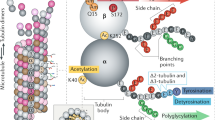Abstract.
The β-tubulin gene of Microbotryum violaceum was sought originally for its potential use in improving the transformation of this organism. The gene was cloned and its nucleotide sequence was determined. The gene was predicted to encode a 444-residue protein with strong sequence similarity to other β-tubulins. The coding region was 2.85 kb, much larger than the corresponding genes from other organisms. This was due to the large number of introns in this gene, as determined by comparison of the cDNA sequence with that for the genomic clone. This gene contained 14 introns, which is the most introns in a β-tubulin-encoding gene yet reported for any organism. Intron position comparisons between the M. violaceum gene and those from β-tubulin genes of other organisms revealed a striking result, since 10 of the 14 introns were unique. An additional feature of the gene's organization was an unusually long 5′ untranslated region, predicted to be nearly 1 kb in length. The possible significance of these unusual features of genetic structure is discussed.
Similar content being viewed by others
Author information
Authors and Affiliations
Additional information
❚
Electronic Publication
Rights and permissions
About this article
Cite this article
Shi, TL., Perlin, M.H. The β-tubulin-encoding gene from Microbotryum violaceum: unusual in a variety of ways. Curr Genet 39, 253–263 (2001). https://doi.org/10.1007/s002940100209
Received:
Accepted:
Issue Date:
DOI: https://doi.org/10.1007/s002940100209



